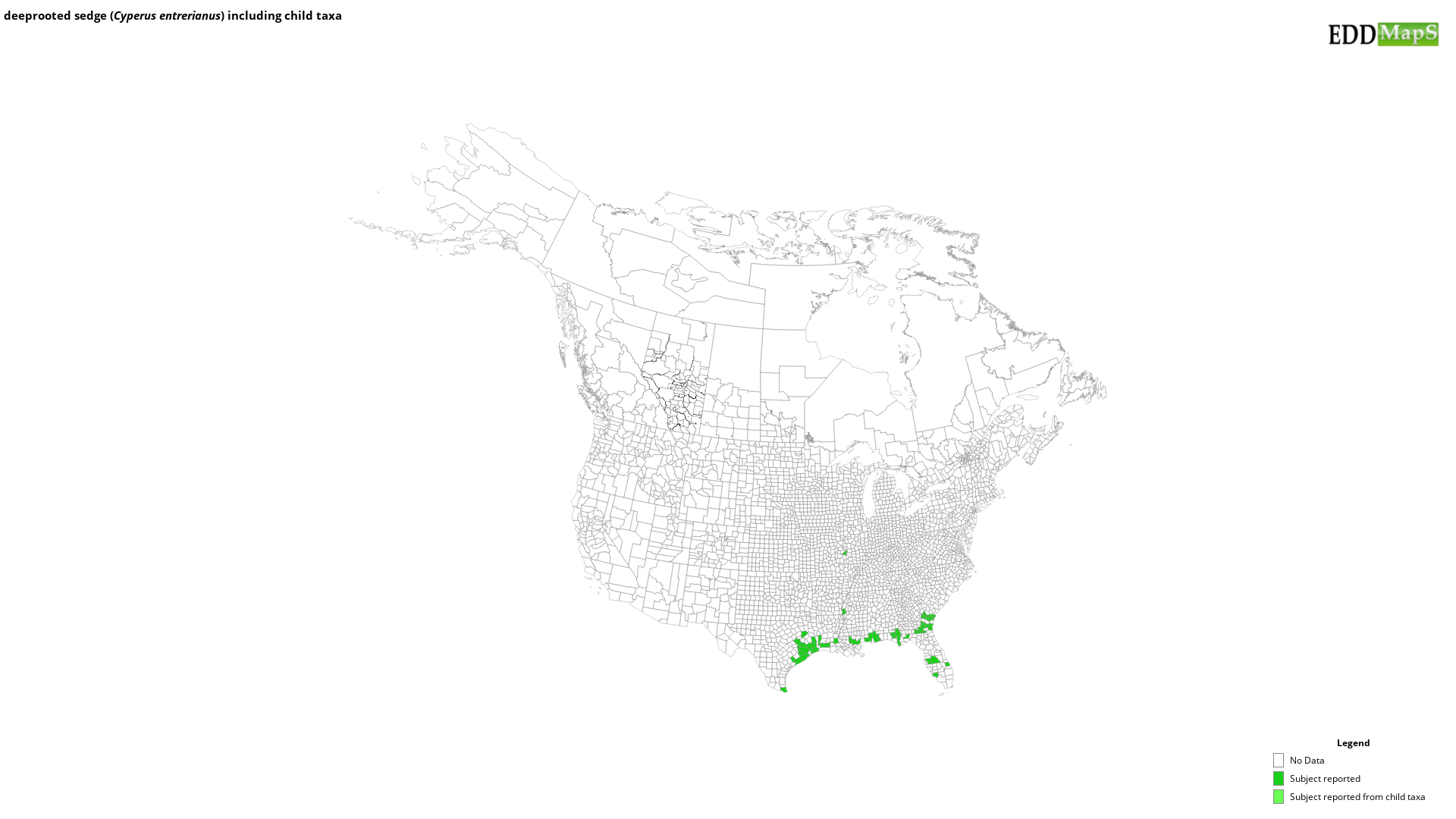deeprooted sedge
(Cyperus entrerianus)
This species is Introduced in the United States
Appearance
Cyperus entrerianus is a wetland sedge that invades disturbed areas throughout the southeastern United States. It is a robust, up to 40 in. (1.02 m) tall, grass-like plant with deeply set, thick rhizomes and dark purple to black leaf bases.
Foliage
The leaves are basal, glossy, and flat or V-shaped. One of the identifying characteristics are the dark purple to black leaf bases.
Flowers
The terminal inflorescence has 5-11 elongate rays ending in densely clustered, globose, greenish-white spikelets. The stem is distinctly three sided.
Fruit
Fruits are brown achenes. Large plants can produce a million viable seeds a year. It also reproduces vegetatively through fragmentation and budding of rhizomes.
Ecological Threat
Cyperus entrerianus can invade wet undisturbed natural habitats as well as disturbed areas such as highway ditches and field margins. It can form monocultures, displacing native vegetation in habitats it invades. Construction, agricultural activities, and roadside mowing are spreading the seeds and dispersing this plant to new areas. It is tolerant of a wide range of soil types from sand to clay. Cyperus entrerianus is native to South America and was accidentally introduced into the United States around 1990. It invades disturbed areas through-out the southeastern United States.
Selected Images
Maps
EDDMapS Distribution - This map is incomplete and is based only on current site and county level reports made by experts, herbaria, and literature. For more information, visit www.eddmaps.org
State Lists - This map identifies those states that have this species on their invasive species list or law.
Invasive Listing Sources
Taxonomic Rank
| Domain: Eukarya |
| Kingdom: Plantae |
| Phylum: Magnoliophyta |
| Class: Magnoliopsida |
| Superorder: Lilianae |
| Order: Poales |
| Family: Cyperaceae |
| Subfamily: Cyperoideae |
| Tribe: Cypereae |
| Genus: Cyperus |
| Cyperus entrerianus |
References
Common Name Reference: USDA, NRCS. 2010. The PLANTS Database. National Plant Data Center, Baton Rouge, LA, USA.
Scientific Name Reference: USDA, NRCS. 2010. The PLANTS Database. National Plant Data Center, Baton Rouge, LA, USA.


